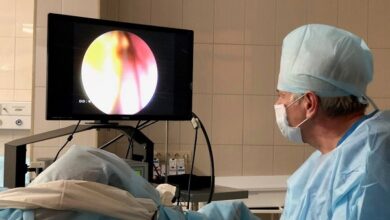
The device could gather more in-depth information about individual neurons.
Due to the complexity of creating mechanical designs and the spatial constraints of the implanted sites, it is still challenging to understand three-dimensional (3D) brain networks by recording surface and intracortical sections of brain signals. Existing methods for studying neurons in animal brains to better understand human brains, however, all carry limitations, from being too invasive to not detecting enough information.
A recently created pop-up electrode device could collect more detailed data about individual neurons and their interactions with one another while lowering the risk of brain tissue injury. This device, created by scientists from the Pennsylvania State University, is a foldable and flexible 3D neural prosthetic.
The device allows the 3D mapping of complex neural circuits with high spatiotemporal dynamics from the intracortical to cortical region. It can map the 3D neural transmission through sophisticatedly designed four flexibles, penetrating shanks, and surface electrode arrays in one integrated system.

Scientists noted, “In addition to the unique design that pops up into three dimensions after being inserted into the brain, their device also uses a combination of materials that had not been used in this particular way.”
“Specifically, they used polyethylene glycol, a material that has been used before, as a biocompatible coating to create stiffness, which is not a purpose for which it has been used previously.”
The device need to be stiff so that it can be inserted into the brain. Also, it needs to be flexible once it is in the brain. Hence, scientists used a biodegradable coating that provides a stiff outer layer on the device. This stiff layer dissolves once the device is in the brain, restoring the initial flexibility.
Co-corresponding author Ki Jun Yu of Yonsei University in the Republic of Korea said, “Taking together the material structure and the geometry of this device, we’ll be able to get input from the brain to study the 3D neuron connectivity.”
Huanyu Cheng, James L. Henderson, Jr. Memorial Associate Professor of Engineering Science and Mechanics, said, “We demonstrate the potential possibilities of identifying correlations of neural activities from the intracortical area to cortical regions through continuous monitoring of electrophysiological signals. We also exploited the structural properties of the device to record synchronized signals of single spikes evoked by unidirectional total whisker stimulation.”
“In addition to animal studies, some applications of the device use could be operations or treatments for diseases where you may not need to get the device out, but you’ll certainly want to make sure the device is biocompatible over a long period of time. It is beneficial to design the structure as small, soft, and porous as possible so that the brain tissue can penetrate and use the device as a scaffold to grow up on top of that, leading to a much better recovery. We also would like to use biodegradable material that can be dissolved after use.”
Scientists are now looking forward to iterating on the design to make it beneficial not only for gaining a better understanding of the brain but also for surgeries and disease treatments.
source:techexplorist





